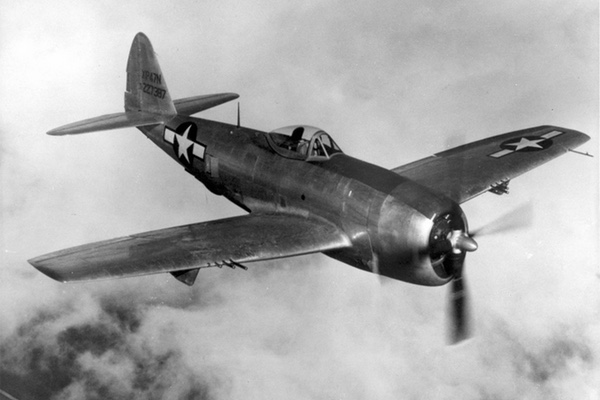One of Hollywood’s Leading Directors Made a Documentary about a WW2 Fighter Aircraft. But the Air Force Refused to Release It.

Most if not all veterans and students of the Second World War know of and praise two related films; the documentary Memphis Belle, the saga of a B-17 bomber and its crew that completed twenty-five combat sorties in the European conflict, the subject of a recent HNN article. Also, the post-war Hollywood drama, The Best Years of Their Lives, the story of veterans coming home. Both films were the creation of the director William Wyler. Not widely known is that Major Wyler, at the request of the Army Air Forces (AAF) also produced Thunderbolt, a documentary of a P-47 Thunderbolt fighter unit during actual combat missions. When completed, however, Thunderbolt was rejected by the AAF Commanding General, Harold “Hap” Arnold, who demanded to know “what's this picture for” and failed to receive an acceptable response. Therein lies an interesting story.
William Wyler, along with four other leading Hollywood directors, went on active duty with the U.S. Military to visually present the conflict as both propaganda and recorded history. Their story is available in Five Came Back: A Story Of Hollywood and the Second World War, by Mark Harris. The other four directors were John Ford, George Stevens, John Huston, and Frank Capra.
A month after the Memphis Belle opened for public viewing Wyler flew to Italy “to begin preparations for his next assignment by the AAF, a documentary, a short [film] about the P-47 Thunderbolt fighter.” It was to be completed “as soon as possible.” It was an assignment, made almost casually, that would permanently alter the course of Wyler’s life and career.”
Compared to Thunderbolt the filming of the Memphis Belle was a virtual “piece of cake” as the saying goes. In addition to cameras placed within the B-17, aircraft nearby could add additional film. Not so with a P-47. Cameras were placed inside to film the pilot as well as outside to record the aircraft taking off and landing, and, of course, there was the gun-camera film that was essential to the story. Unlike the Memphis Belle, however, other fighter aircraft on the mission could not film from the cockpit. For this a medium bomber was assigned to fly along side the featured Thunderbolt.
A B-26 was assigned to the task with director Wyler hanging out of the opened bomb-bay doors to do the filming. As a result, the strong slip stream blew out one of his ears causing a permanent loss of hearing. It was a high price to pay for what was a propaganda film of limited value as the conflict came to a close.
Thunderbolt featured “takes” from the 57nd and 325th Fighter Groups based in Italy. While doing research on one of the 325th pilots I learned about the filming of the documentary and it was suggested I contact Jim Strain, a veteran pilot of the 325th living in Santa Monica, CA as he had additional details about the filming.
On our next visit to California I contacted Strain and he invited my wife and me to drop by that afternoon; that he had something he wanted us to see.
That “something” was the “out-takes” from the film shot with the 325th (“out-takes” are film not used in the final cut). On recalling the wartime experience, he decided to contact Wilder if possible and asked about the unused film. Contact was easy as Wilder was listed in the LA phonebook. Strain dialed the number, Wilder answered, Strain asked about the “out-takes” and was amazed—and excited—about the response:
“They're here in my basement. Come on over and help yourself.”
Jim Strain helped himself to the film and proceeded to paste it into a one-reel movie; it was poorly done and we viewed it for an uncomfortable two hours: Some was interesting, most very dull being extended shots of aircraft on their way to the day's target. All the film exposed when the guns were fired apparently made its way into the final version of Thunderbolt (1947), which, by the way, is now available on a DVD.